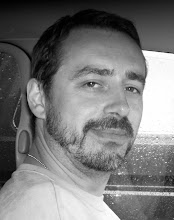 American Gangster is a strong crime drama and, like Fincher's Zodiac, is a throwback to '70s thrillers, with the absence of digital frills and cellphones and other ubiquitous modern technology surprisingly refreshing. Also like Zodiac (which, by the way, is so far the best film of 2007, in my humble opinion), the period setting is naturalistic, never calling attention to itself. But there's a great frisson in watching cops cruise dingy streets in beat-up '70s cars, smoking like chimneys, draped in leather jackets, jeans, and wide-lapeled shirts. It's like we're back in the heyday of Hollywood thrillers, and you almost expect Gene Hackman as Popeye Doyle to stride around the corner (the case that inspired Friedkin's The French Connection is even name-checked a few times).
American Gangster is a strong crime drama and, like Fincher's Zodiac, is a throwback to '70s thrillers, with the absence of digital frills and cellphones and other ubiquitous modern technology surprisingly refreshing. Also like Zodiac (which, by the way, is so far the best film of 2007, in my humble opinion), the period setting is naturalistic, never calling attention to itself. But there's a great frisson in watching cops cruise dingy streets in beat-up '70s cars, smoking like chimneys, draped in leather jackets, jeans, and wide-lapeled shirts. It's like we're back in the heyday of Hollywood thrillers, and you almost expect Gene Hackman as Popeye Doyle to stride around the corner (the case that inspired Friedkin's The French Connection is even name-checked a few times).So the setting and the look of the film are authentic to the period, and after all creating a world is something that director Ridley Scott excels at, and he masters the details of American Gangster, which suprisingly doesn't have that stylish cinematic sheen that his best work has. The photography, in fact, is rather drab, but this is clearly an artistic choice and it's one that works. Scott sells the setting, imbruing the film with grimy moral corruption, we as an audience are there, and the film then lives and dies on the strength of the story and the acting.

Thankfully American Gangster has one of the most talented casts of any Scott film. The two leads, Denzel Washington as titular gangster Frank Lucas and Russell Crowe as Detective Richie Roberts, deliver thoroughly engaging and textured performances. Crowe in particular demonstrates that he's one of the few major film stars around today that carries within him the soul of some of the great stars of the past who were, like Bogart, a synchretism of character actor and magnetic screen icon. Detective Roberts is an interesting character, totally against the usual type we see as cops in big movies. He's strong, honest and capable, but also low-key, uncomfortable and almost awkward around other cops.
Washington is his match, but he has the more cliched role, a bodyguard to Harlem crime kingpin Bumpy Johnson who ascends the criminal hierarchy after his boss dies, by smuggling high-quality, low-price heroin into the U.S. directly from the supplier in Thailand. Lucas is played a little against type, though -- he's low-key, professional, smart, and under control.
 The plot makes the point that, by cutting out the middle-man and offering a superior product at a lower price, what Lucas was doing in the illegal drug trade merely mirrored what capitalism was doing in major department stores. The script, written by Steven Zaillian based on a magazine article about the real-life Lucas, ingeniously keeps the story of the gangster and the cop entirely separate for most of the film, and finally brings the two characters together in a way that is unexpected (i.e., not in a bloody shootout or car chase). American Gangster is packed with detail and incident, and even at about 2 1/2 hours is never boring, even though it lacks any big action sequences other than a tense shoot-out.
The plot makes the point that, by cutting out the middle-man and offering a superior product at a lower price, what Lucas was doing in the illegal drug trade merely mirrored what capitalism was doing in major department stores. The script, written by Steven Zaillian based on a magazine article about the real-life Lucas, ingeniously keeps the story of the gangster and the cop entirely separate for most of the film, and finally brings the two characters together in a way that is unexpected (i.e., not in a bloody shootout or car chase). American Gangster is packed with detail and incident, and even at about 2 1/2 hours is never boring, even though it lacks any big action sequences other than a tense shoot-out.There's a strong supporting cast that includes Armand Assante, John Ortiz (Carlito's nephew from DePalma's Carlito's Way), Jon Polito (the gangster from the Coen Brothers' Millers Crossing), Cuba Gooding Jr. (partly redeeming himself for a string of subpar roles), and John Sayles' regular Joe Morton. The standout in a supporting role is Josh Brolin as a corrupt scumbag cop, oozing slime and mendacious reptilian menace.
While it doesn't ascend the heights of greatness achieved by the classics in the crime genre, American Gangster is solid, well-acted, and engaging.
---
Directed by Ridley Scott
Written by Steven Zaillian
Denzel Washington...Frank Lucas
Russell Crowe ...Richie Roberts
Chiwetel Ejiofor...Huey Lucas
Josh Brolin...Detective Trupo
Lymari Nadal...Eva
Ted Levine...Lou Toback






































